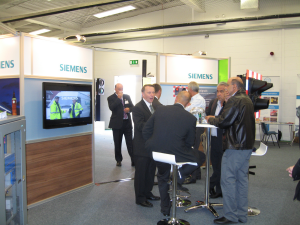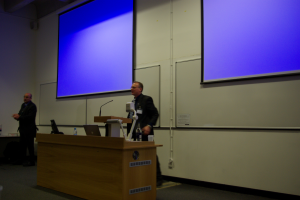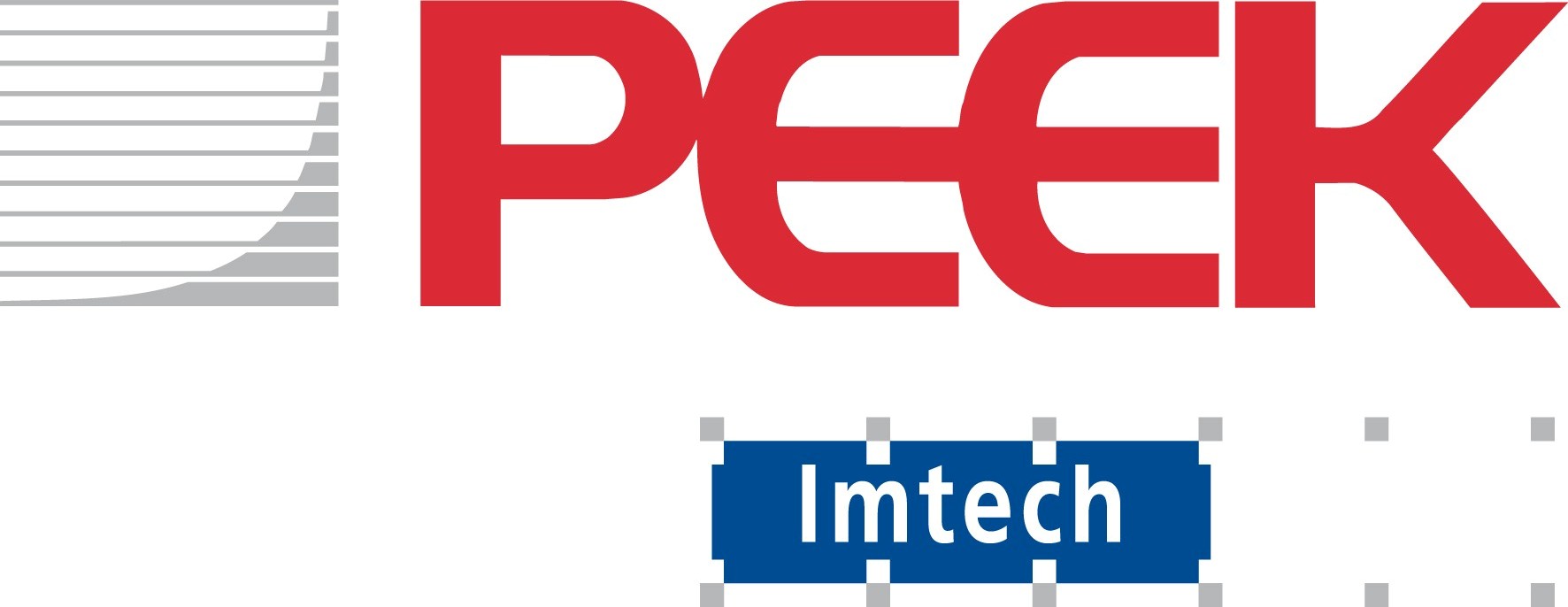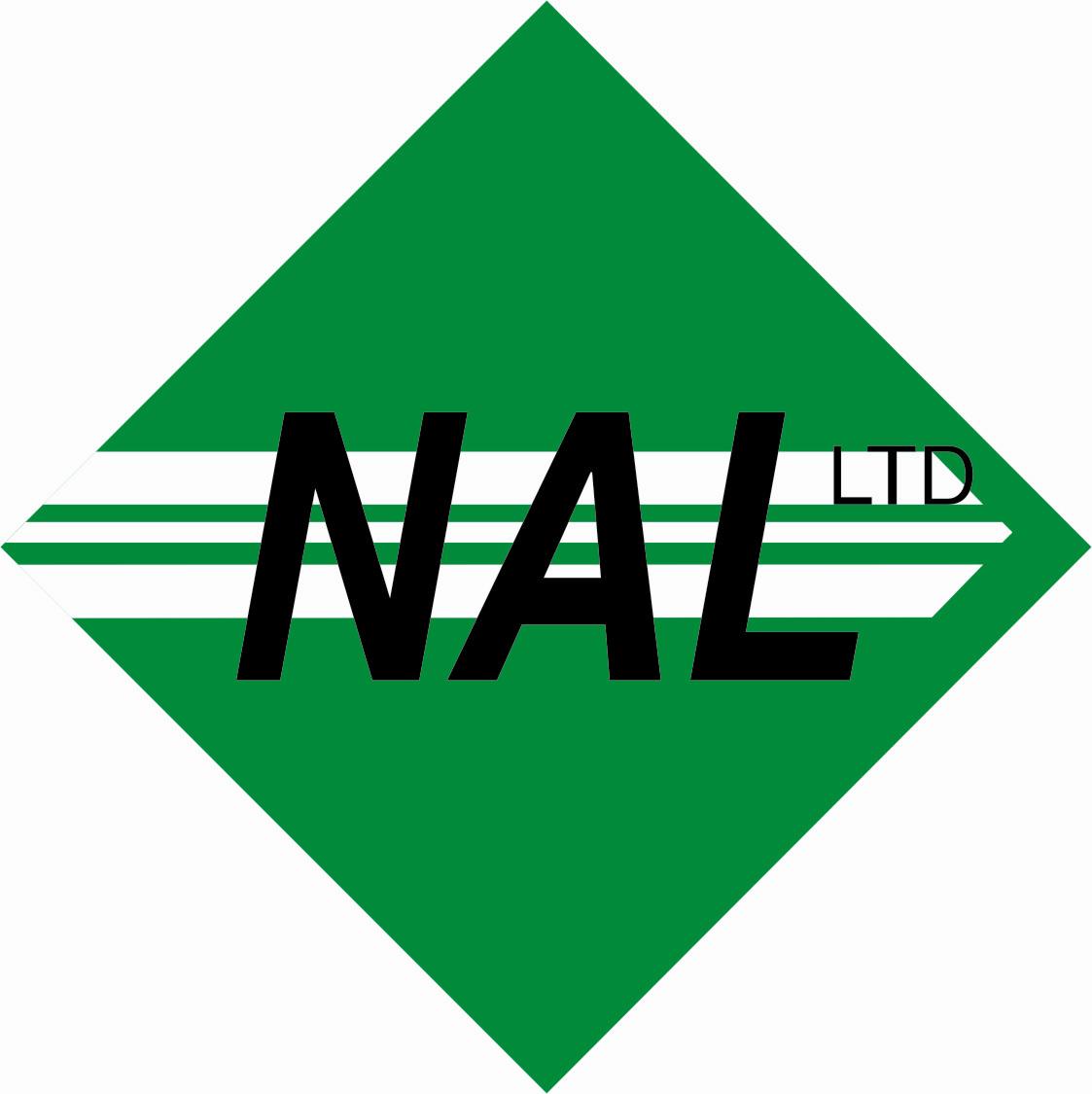The 16th JCT Traffic Signal Symposium & Exhibition


This page provides archive information on the 2011 Symposium.
For this year's Symposium, please click here
The 2011 Symposium was held at The University of Warwick on Wednesday 21st and Thursday 22nd of September. The format of the event was the same as in previous years including a Symposium programme filled with topical presentations and a specialist Exhibition and with lots of opportunity to catch up with old friends or network with new contacts.
The MOVA User Group was also held on Tuesday 20th September at the University.
Overview
The JCT Symposium & Exhibition started in 1996 as a way to bring traffic signal practitioners together with manufacturers and to maintain a sense of community amongst signals engineers. It is intended to run as an affordable conference that is accessible to as many people as possible, regardless of experience and that encourages the exchange of both knowledge and experience. Over the past few years, the symposium has consolidated its position as the UK's best conference event for traffic signals.
The Symposium & Exhibition runs over two days, is usually preceded by the MOVA user group and mixes conference style papers, the principal manufacturers, networking opportunities and organised social events in the evening. As far as content goes, the emphasis is on the signals community itself and JCT relies upon the submission of papers and presentations from working signal engineers and/or manufacturers, so if you have some experience that would be of interest to our community then please let us know and we will do everything we can to help you present your findings including providing you with subsidised attendance at this event.
Symposium article from Traffic Engineering & Control - July 2011 (PDF) →
A selection of Photographs of the Symposium are available on our Facebook page.
JSTSM Prizes 2011
As regular Symposium attendees will know JSTSM sponsor prizes each year for the papers presented. The prizes are awarded by a panel of eminent traffic signal professionals
This years prizes were awarded as follows:
- Overall Best Paper - Stop line to Start line, Glynn Barton, Transport for London. Awarded for its content, his delivery style, for taking on an unbelievable work load and the confidence to install the infrastructure in such a short time on the London Olympic Route.
- Best presenter - Errol Allen, Buckinghamshire County Council. Awarded for a very relevant and detailed paper on bus priority adjacent to a travel interchange and fancy footwork to which we could attribute the strictly come dancing award.
- The most thought provoking Paper - Keith Firth, SKM-Buchanan. Awarded for making us think about what we do and why and asking us "Why not turn signals off and go and do something else".
- Introducing and implementing new practices - Tony Earl, Transport for London. Awarded for challenging current practices and bringing to our streets a new concept from design to implementation of a pedestrian countdown timer, quite an achievement considering our bureaucratic approval system.
- Young Engineer - Christopher Tebb, Mott MacDonald. Awarded to someone coming into the profession prepared to put himself in the firing line by questioning us and asking can we do something different with part time control and roundabouts.
2011 Symposium Papers
The programme of papers for 2011 was as follows:
Where authors have provided permission papers can be downloaded by clicking on the download links.
From stop line to start line - Olympics, Glynn Barton, Transport for London
During the 2012 Games, the road network in London is going to feel and operate in a very different manner than it does today. With the eyes of the world on London our vision is that that sport and not transport makes the front pages of the newspapers.
One key element to the success of the games is the ability for the Games Family and spectators to get around London in a timely and safe fashion. Key to the vitality of London is the ability for businesses to go about their daily operations. It is essential that the road network is set up in a way to facilitate these clear needs.
During the games period a substantial 'Active Traffic Management' programme will operate. To facilitate the operation of the road network, significant planning, modelling, infrastructure enhancements and operations capability enhancement have and will be undertaken to ensure that the best engineering interventions are implemented on the road network leading up to and during during the Games period.
Alongside the operational planning through detailed modelling, development of signalling strategies and interventions the SCOOT system will play a key role and is also being enhanced to allow the operational parameters for the active traffic management to be implemented easily and quickly on street through an enhanced outcome based version of SCOOT, SCOOT JTR GOLD.
An Investigation into the effectiveness of part-time control at signalised roundabouts - Christopher Tebb - Mott MacDonald
Following the County Surveyors' Society (CSS) study in 1997 into accidents at sites with part time signals part time signals have largely fallen into disrepute. Christopher proposes a novel and solution using Intelligent Road Studs.
Long Pedestrian Crossings: Things to consider and how should we assess them? - David Prior - Waterman
After a 4 year absence from the Symposium Stage David Prior returns to discuss the particular difficulties and pitfalls with designing long, single, direct, pedestrian crossings
Pedestrian Countdown at Traffic Signals - Tony Earl - Transport for London
This paper will look at the trials of pedestrian countdown timers Transport for London have been conducting at several locations in London.
Review, Reuse, Release and extend: Change the way you exploit existing low cost comm's assets to deliver new IP services - Julien Meiffren - IT4Automation Ltd
A brand new speaker joins us this year from IT4. Julien will present a case study of the UTMC upgrade at J11 of the M4 where cost was a major consideration.
SCOOT MMX (SCOOT Multi Model 2010) - Mark Bodger - Siemens - on behalf of SCOOT Steering Group
The SCOOT Urban Traffic Control system is now operating in over 200 cities and towns worldwide. Since the first system was installed there has been a continuous program of research and development to provide new facilities which take into account new technology, and meet the requirements of the traffic manager. Recent releases have incorporated many new features aimed at providing priority to public transport and in the last release (SCOOT MC3) new strategies to provide benefit to pedestrians at pedestrian crossings were included. In this new version SCOOT MMX the multi model theme is continued with additional facilities to prioritise pedestrians at junctions as well as features to improve operation during low flow periods and an updated and enhanced estimate of emissions.
Continuing professional development and the importance of professional registration in a financially constrained environment, Tony Sharp, IHE
Tony Sharp will review the challenges we face in maintaining CPD when budgets are being cut and there are serious constraints on spending, suggesting ways to keep up to date on a shoestring. He will also offer advice on the importance of becoming professionally registered and outline the main ways of doing so.
Simulation & Testing of Strategic Traffic Control Rationales - Martin Wylie - Southampton City Council
Martin Wylie returns to the stage again this year to discuss collaborative work with Traffic Simulation Systems in creating a new interface between micro-simulation and offline UTC emulation. TSS will also be exhibiting and showing the simulation in practice on their stand.
Broad Noise Evaluation using Microsimulation - Pete Sykes & Drew Hill
After a few years absence Pete Sykes (formerly of SIAS) will return along with Drew Hill from SIAS to share the work they have been undertaking using microsimulation to investigate the variation in noise levels different locations on the road network and the detailed effects of flow variation, stop/start driving in congestion and queues at signalised junctions.
Why don't you...just switch off those traffic signals and go and do something more challenging instead? - Keith Firth - SKM Colin Buchanan
Keith will be discussing the Portishead and Bristol trials which involved removing traffic signals and considering the implications of further planned trials. He will discuss the potential for relaxing formal controls along a corridor of linked junctions.
Keith Manston will explore the challenges, benefits and opportunities of using radar technology to detect pedestrians.
A Green Wave Reprieve - Blaise Kelly - Independent
A new comer to the symposium stage, Blaise Kelly will discuss synchronising large numbers of signals using basic mechanics formulae as opposed to SCOOT. He will compare scenarios using a12km square area Paramics model of Chorlton cum Hardy in Manchester.
Bus Priority into and out of the new High Wycombe Transport Interchange - David Birkinshaw (BWB Consulting) & Errol Allen (Buckinghamshire County Council)
Reducing lifetime cost for SCOOT and MOVA via smart vehicle detection - Graham Muspratt - Clearview Traffic Group Ltd
The magnetometer marches on. In what is becoming a series of presentations cataloguing the rise of Magnetometer use Graham will explain how Aberdeen City Council have been replacing traditional SCOOT loops with Magnetometers in an attempt to drive up detection reliability.
We've got a cunning plan....To really get more for less! - Ian Routledge (IRC) & John Nightingale (JCT)
Ian Routledge and John Nightingale will examine the current weaknesses in the current planning/signal design process and suggest a better way forward to ensure delivery of optimum signal solutions that really will provide more benefits and reduce implementation and operating costs.
Buying Solutions - Traffic Management Technology Framework - Gafoor Din - Warwickshire County Council
Following on from last years presentation Gafoor Din will update the symposium on the progress of the Buying Solutions Framework agreement for purchasing Traffic Management Technology enabling customers to specify an output based requirement to deliver a bespoke solution or technical based specification for the purchase of commoditised goods and services.
Lower emissions through new transport technology solutions - Siebe Turksma - Peek
Sieba Turksma will introduce the EcoFlex pilot which seeks to achieve the right balance between capacity and public transport, cycle and pedestrian utility through a real-time, low cost measurement of the actual emissions levels. And will discuss the FREILOT pilot project which uses cooperative technology to give priority to HGVs (which produce far more emissions than small hybrid cars) in selected fleets. This cooperative technology makes it possible to enforce environmentally friendly driving behaviour.
Following the release of LinSig 3.1 Paul Moore will introduce major new features including Lane Based flow entry with flow layers, multiple cycle times, multiple intergreen sets, audit tools and enhancements to SCATS based modelling.
Mova user group update, John Spence,JSTSM
John Spence will update symposium delegates on the proceedings at the previous days MOVA User GroupThe future role of the ADEPT Traffic Systems Group in representing user needs in the UK traffic systems industry. - Adrian Gray - Hampshire County Council
Adrian will present a paper on the future of ADEPT (Association of Directors for Environment Planning and Transportation) Traffic Systems Group, the future of EITAC (Electrotechnical Industries Traffic Control Advisory Committee) and the opportunities for a possible product assurance type scheme
Unlocking the potential of your Traffic Management System - Mark Bodger - Siemens
Mark will review the latest developments in the UTMC arena and explores the benefits they bring to both Traffic Managers and Local Authority budgets owners.
A303 Countess Roundabout - Integration and Innovation - Alistair Gollop - Mott MacDonald
Alistair Gollop will take the symposium through a scheme which presented particular challenges. Being in close proximity to the World Heritage Site of Stonehenge this roundabout signalisation scheme demanded high attention to aesthetics such as shared street lighting and signal facilities. Vulnerable to exit blocking the scheme also required congestion monitoring on egress. Utilising ELV, being Passively Safe and under MOVA control with Wi-Fi & Web interface the scheme will demonstrate best practice.
SPOT the difference - Kevin Gilday - Swarco Traffic Ltd
With the arrival of Swarco Traffic Ltd into the UK market comes the opportunity for some of the European products and strategies to be deployed and fully supported in a way that has not been possible before. At the forefront of the Swarco control strategies is SPOT an adaptive algorithm that is flexible enough to run at an individual junction (like MOVA) or expand to a group of junctions (like linked MOVA or a SCOOT region) or with the addition of the UTOPIA instation operate as a complete coordinated ITS solution. This paper discusses the benefits of the SPOT option and draws on some current projects in the UK where this different approach is currently being deployed.
Applications of Traficons Video Detection Systems - Gordon Wilson - Pell Frischmann
The paper will illustrate Traficons' research and development approach to the ever changing face of technology and finally their approach to the quality control of their products. This will then be supplemented by practical experience associated with the deployment of Traficon Extreme cameras in Mumbai, examples of where the Traficon video detectors have been utilised in Liverpool in a SCOOT environment and further examples of deployment in a MOVA scenarios. These reviews will provide illustration of the site configurations and the operational performance of the equipment under these varying control strategies.
Venue

2011 saw the Symposium moving to a new home at The University of Warwick. This popular conference venue provides us with all the facilities we need for the presentations, the exhibition, on-site overnight accommodation and networking/social events.
The University is located centrally within the UK just south of Coventry and has good transport links with the rest of the country being only a few minutes from the M6 and railway stations. For international visitors Birmingham airport is only 10 miles away.
Exhibition
The Symposium has had a parallel exhibition for many years and in 2011 the additional exhibition space at Warwick meant the exhibition was bigger and better than ever. As in previous years the exhibition included stands for most of the key companies in the traffic signals field and entry was free for Symposium delegates.
Exhibitors for 2011 include:
|
|
|
Event Sponsors
As in previous years the Symposium is generously sponsored by several major companies from the traffic control industry.
For 2011 Sponsors include:
- Gala Dinner - Siemens
- Evening Social/Networking on Tues and Weds - NAL, Peek, Motus, VMS, Clearview Traffic, JCT
- BBQ - JCT and Swarco Traffic
- Archery competition - Westcotec
- Paper Prizes - JSTSM
- Delegate Bags - Highways Magazine
Further Information
If you would like any further information regarding the Symposium or Exhibition please don't hesitate to contact us at symposium@jctconsultancy.co.uk.
 |
|
 |
|
 |
|

Upcoming courses
20 Jan 2026: Online Introduction To Traffic Signals ...more
03 Feb 2026: LinSig3 : Online Junction Modelling Computer Workshop ...more
02 Jun 2026: Introduction to Traffic Signals ...more
02 Jun 2026: Practical Application of MOVA Computer Workshop including the use of MOVA Tools and MOVA Simulation ...more
04 Jun 2026: LinSig3 : Junction Modelling Computer Workshop ...more
Subscribe to email updates
To subscribe to Course, Software or Symposium update emails, please click here









